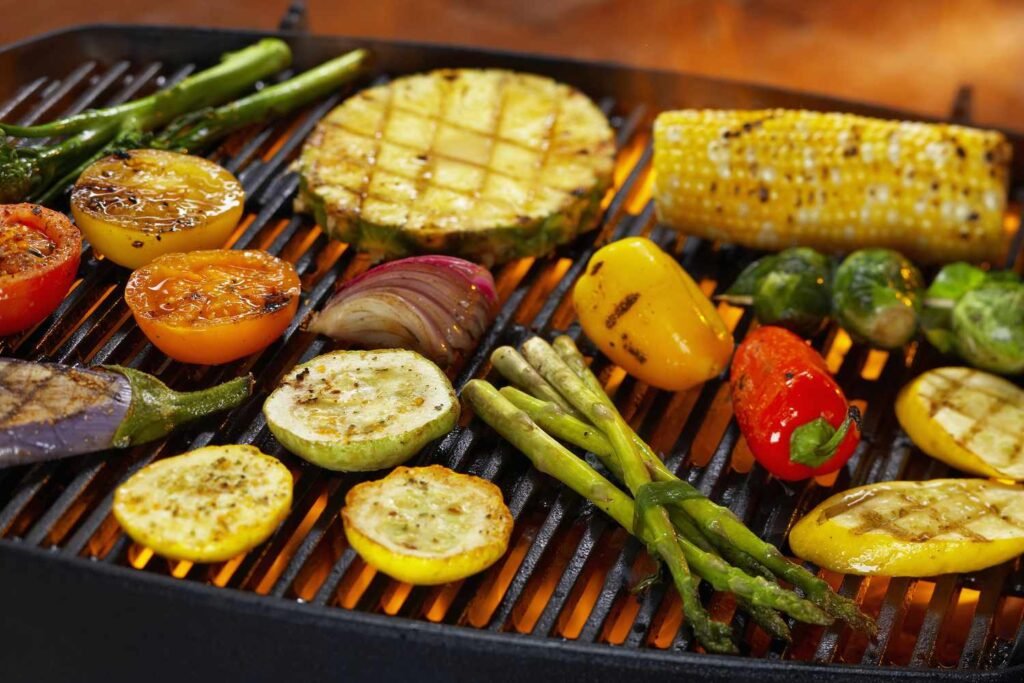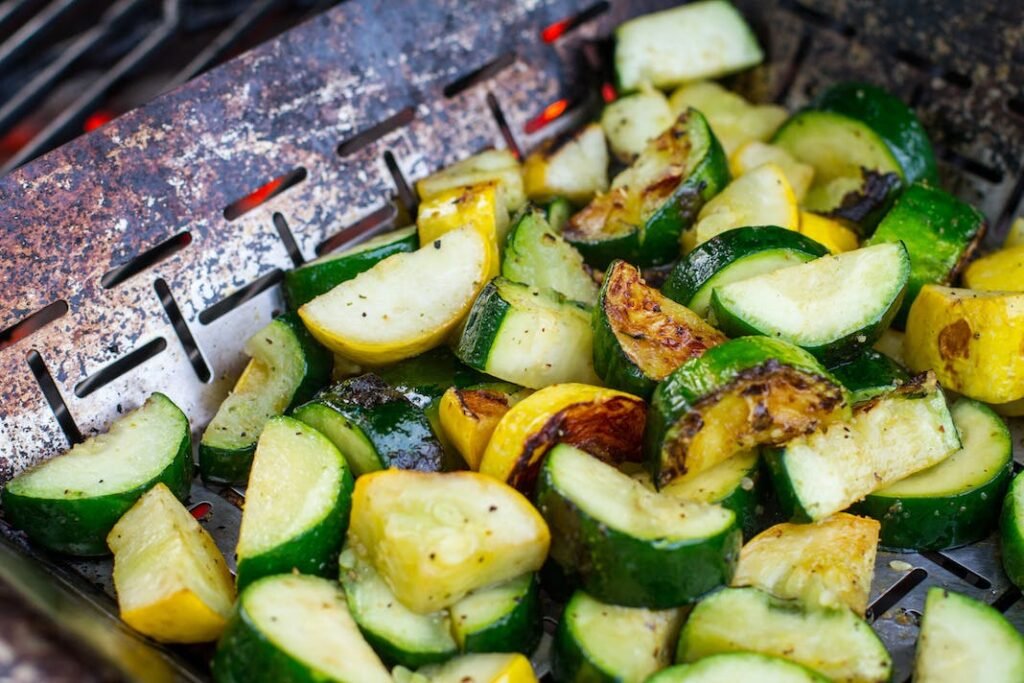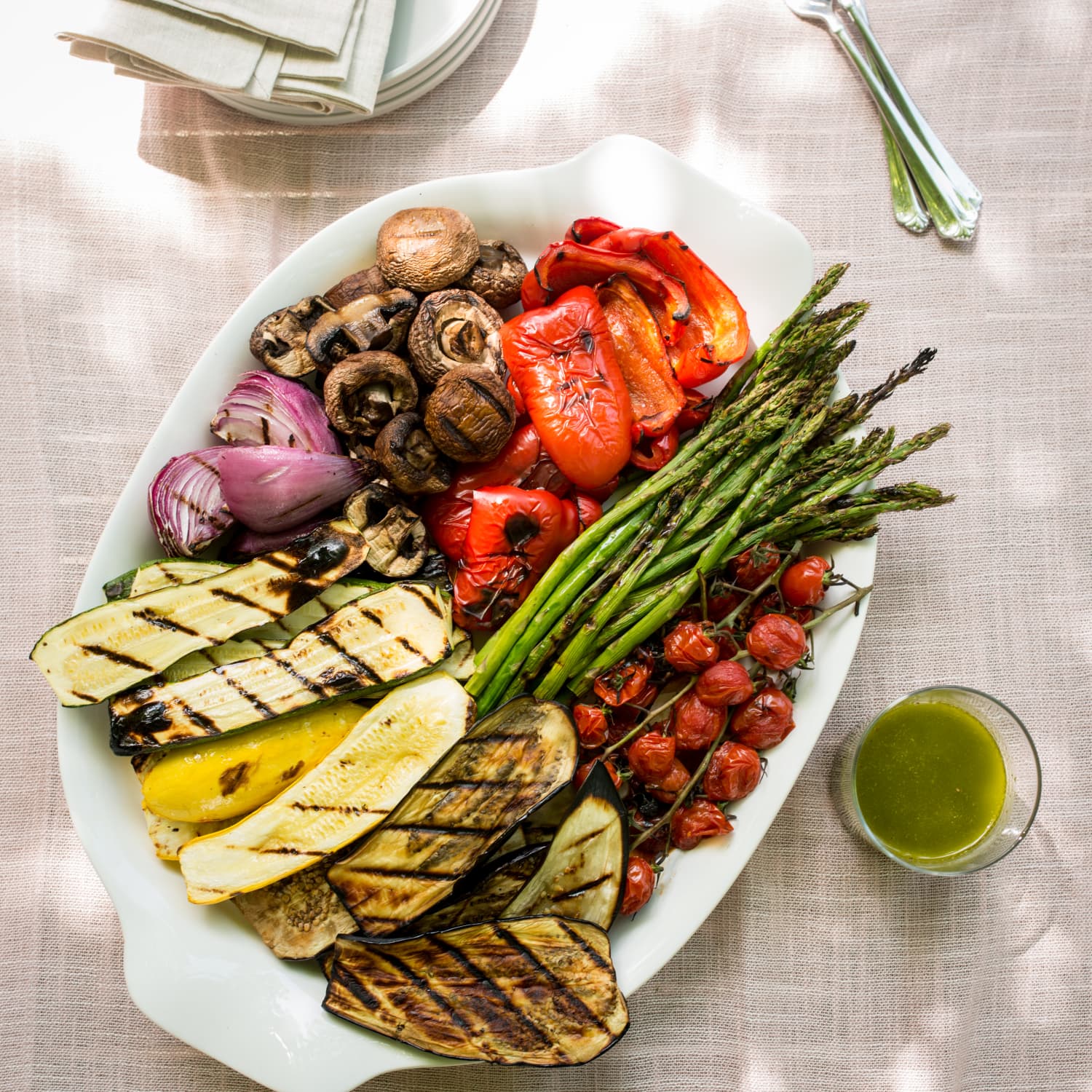Are you tired of the same old boring grilled vegetables? Look no further! In this article, you will discover a collection of essential tips that will take your veggie grilling game to the next level. From choosing the right veggies to achieving the perfect char, these simple yet effective techniques will ensure that your grilled vegetables are bursting with flavor and have the perfect texture every time. Whether you are a seasoned grilling expert or a novice in the kitchen, these tips are guaranteed to help you create delicious and mouthwatering vegetable dishes that will impress even the pickiest of eaters. Get ready to transform your backyard barbecue into a veggie paradise with these essential grilling tips!
Choosing the Right Veggies
When it comes to grilling vegetables, selecting the right ones plays a crucial role in creating a flavorful and delicious dish. Opting for fresh and firm vegetables ensures that you get the best texture and taste. Look for vegetables that are free from blemishes, with vibrant colors and a firm texture. Choosing vegetables that are in season not only ensures their availability but also guarantees that you get the most out of their natural flavors.
Selecting Fresh and Firm Vegetables
When choosing vegetables for grilling, it’s important to pick ones that are fresh and firm. This will ensure that they hold up well on the grill and don’t become mushy or overly soft. Look for vegetables with bright, vibrant colors and a crisp texture. Avoid vegetables with blemishes or signs of wilted leaves. The freshness of the vegetables will greatly contribute to the overall taste and texture of your grilled dish.
Considering Texture and Size
Texture and size are important factors to consider when selecting vegetables for grilling. Some vegetables, like bell peppers and zucchini, have a natural firmness that holds up well on the grill. Others, such as mushrooms and tomatoes, are softer and may require extra care. It’s also important to consider the size of the vegetables. Cutting them into uniform sizes ensures even cooking and prevents smaller pieces from overcooking or larger pieces from undercooking.
Preferably Seasonal Produce
Choosing seasonal produce for grilling is advantageous for several reasons. First, seasonal vegetables are typically at their peak freshness, which means they’ll have the best flavor and texture. Second, seasonal produce is often more affordable and readily available. Lastly, by selecting vegetables that are in season, you can support local farmers and reduce your carbon footprint. Keep an eye out for what’s fresh and in season in your area, and let the seasons dictate your vegetable choices for grilling.
Preparation and Cleaning
Before you start grilling your vegetables, taking the time to properly prepare and clean them is essential. This ensures that they are free from any dirt, pesticides, or contaminants.

Washing the Vegetables Thoroughly
Begin by washing the vegetables thoroughly under cold running water. Use a vegetable brush or your hands to gently remove any dirt or debris. This step not only cleanses the vegetables but also helps remove any surface bacteria that may be present.
Peeling or Trimming if Necessary
In some cases, peeling or trimming certain vegetables may be necessary. For example, carrots or potatoes may need to be peeled to remove any tough outer skin. Similarly, removing the tough stems or trimming the ends of vegetables like asparagus or green beans can help improve their overall texture.
Cutting into Proper Grilling Sizes
To ensure even cooking and easy handling on the grill, it’s important to cut your vegetables into proper grilling sizes. This means slicing them into equal-sized pieces that will cook at the same rate. Thick slices or chunks work well for vegetables like eggplant or squash, while thin slices are suitable for vegetables like zucchini or bell peppers.
Picking the Right Marinade or Seasonings
Choosing the right marinade or seasonings can take your grilled veggies from ordinary to extraordinary. Marinating vegetables before grilling adds flavor and helps to keep them moist. Choose a marinade that complements the natural flavors of the vegetables but doesn’t overpower them. Alternatively, you can use a combination of herbs, spices, and a drizzle of olive oil to season the vegetables just before grilling.
Creating the Perfect Grill Setup
Creating the perfect grill setup ensures even cooking and prevents your vegetables from sticking or falling through the grates.

Choosing the Right Grill
The type of grill you use can greatly impact the outcome of your grilled vegetables. While charcoal grills offer a smoky flavor, gas grills provide more precise temperature control. Consider your preferences and the specific requirements of the vegetables you’re grilling when choosing between the two.
Using Direct or Indirect Grilling
Direct grilling involves cooking the vegetables directly over the heat source, while indirect grilling involves cooking them off to the side of the heat source. Direct grilling is suitable for quick-cooking vegetables, while indirect grilling works well for denser veggies that require a slower cooking process.
Optimizing Heat for Different Vegetables
Different vegetables require different levels of heat for optimal cooking. As a general rule, denser vegetables like potatoes or carrots require medium to high heat, while softer vegetables like zucchini or tomatoes benefit from lower heat to prevent overcooking or burning.
Grilling Techniques
To achieve perfectly grilled vegetables, it’s important to master the appropriate grilling techniques.
Preheating the Grill
Before placing your vegetables on the grill, make sure to preheat it properly. This ensures that the grill grates are hot, which helps prevent sticking and promotes even cooking. Preheating also allows any residual food particles or grease to burn off, keeping your grilled vegetables clean and free from any unwanted flavors.
Using High Heat for Quick Cooking
When grilling quick-cooking vegetables like asparagus or green beans, it’s best to use high heat. This allows the vegetables to cook quickly while retaining their crisp texture. Keep a close eye on them and be prepared to flip or remove them from the grill once they are lightly charred and tender.
Using Medium Heat for Tender Vegetables
Tender vegetables like zucchini or bell peppers benefit from medium heat. This allows them to cook more slowly and evenly, resulting in a soft and caramelized exterior with a tender interior. Remember to adjust the heat settings on your grill accordingly to achieve the desired doneness.
Using Foil Packets or Skewers for Delicate Veggies
Delicate vegetables like cherry tomatoes or mushrooms can easily fall through grill grates or break apart during cooking. To prevent this, consider using foil packets or skewers. Foil packets are especially useful for smaller vegetables, while skewers work well for larger ones. These methods not only make handling and flipping the vegetables easier but also help them cook more evenly.
Grilling Time and Temperature
Knowing the ideal cooking times and temperatures for different vegetables is key to achieving perfectly grilled results.
Regularly Checking the Veggies
Be sure to regularly check your vegetables while they are on the grill. Different vegetables require different cooking times, so keeping a close eye on them helps prevent overcooking or undercooking. As a general guideline, denser vegetables usually take longer to cook, while softer vegetables cook more quickly.

Flipping to Ensure Even Cooking
Flipping your vegetables during the grilling process ensures even cooking and prevents one side from becoming too charred. Use long-handled tongs or a spatula to gently turn the vegetables over. Be careful not to pierce or break them, as this can cause them to lose their shape and texture.
Preventing Charring or Burning
To prevent charring or burning, it’s important to monitor the heat levels and cooking times closely. Adjust the heat settings on your grill as needed and be cautious when grilling smaller or more delicate vegetables, as they can easily burn. If you notice any signs of charring or excessive browning, move the vegetables to a cooler part of the grill or reduce the heat to avoid further cooking.
Using Proper Grilling Tools
Having the right tools for grilling vegetables can make the process easier and more enjoyable.
Choosing the Right Grill Brush
A good grill brush is essential for keeping your grill grates clean. Make sure to choose a brush with sturdy bristles that can effectively remove any food residue or debris. Regularly cleaning the grill grates helps prevent sticking and promotes even cooking.
Using Long-Handled Tongs or Spatulas
Long-handled tongs or spatulas are invaluable tools when grilling vegetables. They allow you to easily flip and maneuver the vegetables without getting too close to the heat source. Look for tongs or spatulas with a comfortable grip and sturdy construction.

Possibly Needing Grill Baskets or Mats
For smaller or more delicate vegetables that may fall through the grill grates, consider using grill baskets or mats. These provide a secure surface for the vegetables to cook on while still allowing them to benefit from direct heat. Grill baskets are ideal for vegetables like cherry tomatoes or sliced mushrooms, while mats work well for thin and delicate vegetables.
Adding Flavor with Herbs and Spices
Enhance the flavors of your grilled vegetables by experimenting with different herbs and spices.
Experimenting with Different Seasonings
Don’t be afraid to get creative with your seasonings when grilling vegetables. Experiment with different herbs, spices, and seasoning blends to find the perfect flavor combination. Consider flavor profiles like Italian, Mexican, or Asian, and use seasonings that complement the vegetables you are grilling.
Using Fresh or Dried Herbs
Fresh herbs add a burst of freshness and flavor to grilled vegetables. While dried herbs can also be used, they tend to have a more concentrated flavor. Choose herbs that pair well with the vegetables you’re grilling, such as rosemary for potatoes or thyme for mushrooms.
Balancing Flavors for Taste
When adding herbs and spices to your grilled vegetables, it’s important to balance the flavors to create a harmonious taste. Avoid overpowering the natural flavors of the vegetables by using a light hand with the seasonings. Taste as you go and adjust the seasonings accordingly until you achieve the desired flavor.
Serving and Presentation
The presentation of your grilled vegetables plays a significant role in making them visually appealing and appetizing.
Plating the Grilled Vegetables
When it comes to plating your grilled vegetables, consider arranging them in an aesthetically pleasing manner. You can create a beautiful and appetizing display by arranging the vegetables in a colorful pattern or by creating a visually appealing side dish or salad. Take the time to arrange them thoughtfully, and your dish will not only taste great but also look visually appealing.
Garnishing with Fresh Herbs or Citrus
Adding a final touch of freshness and brightness to your grilled vegetables can be done with the help of fresh herbs or citrus. Sprinkle some finely chopped cilantro, parsley, or basil over the vegetables to enhance their flavors and add a pop of color. Squeezing a bit of lemon or lime juice over grilled vegetables can also provide a tangy and refreshing element.
Pairing Vegetables with Dips or Sauces
Grilled vegetables can be further elevated by serving them with delicious dipping sauces or dressings. Consider pairing them with classic options like ranch dressing or balsamic glaze, or get creative with unique sauces like yogurt tahini or garlic aioli. The right dip or sauce can enhance the flavors of the vegetables and provide an extra element of excitement to your dish.
Storing and Reheating
Knowing how to properly store and reheat your grilled vegetables ensures that you can enjoy their flavors and textures at a later time.
Properly Cooling Down Grilled Vegetables
After grilling your vegetables, let them cool down to room temperature before storing them. This prevents condensation and helps retain their texture. Leaving them out to cool for about 15-30 minutes is usually sufficient.
Storing in Airtight Containers in the Fridge
Once your grilled vegetables have cooled, transfer them to airtight containers and store them in the refrigerator. This helps maintain their freshness and prevents them from drying out. Make sure to label the containers with the date to keep track of their freshness.
Reheating to Maintain Texture and Flavor
When reheating grilled vegetables, it’s important to do so gently to avoid overcooking or drying them out. You can reheat them on the grill over indirect heat, in a preheated oven, or in a skillet with a drizzle of olive oil. Be mindful not to overheat them and monitor their texture closely to prevent them from becoming mushy. The goal is to warm them through while still maintaining their original texture and flavor.

